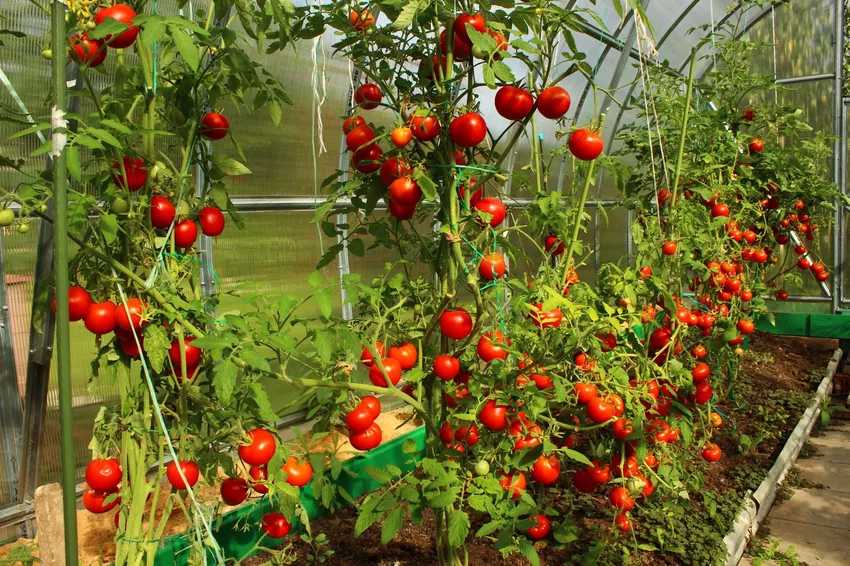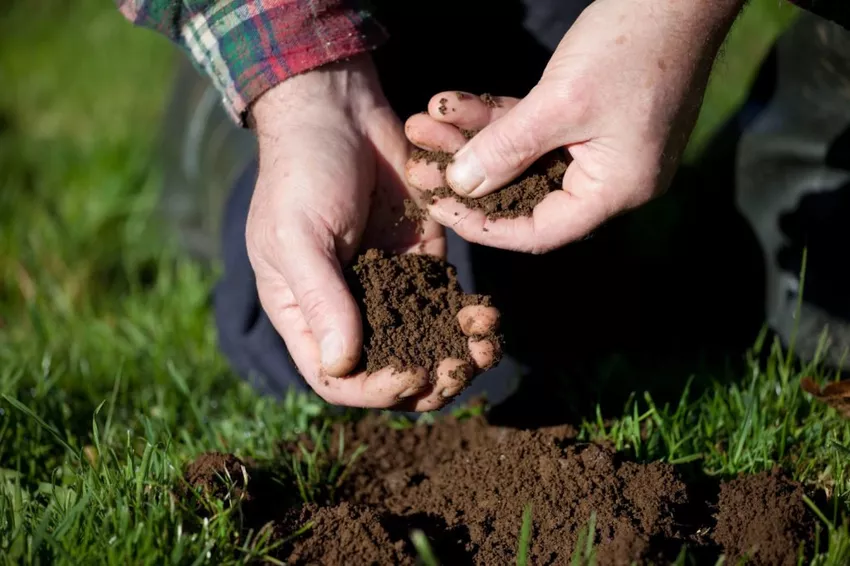Can you always plant tomatoes in the same bed? What plants can be planted after tomatoes? We answer all your tomato crop rotation questions.

The popular tomato plants grow year after year in the same place in many greenhouses and beds. Unlike most legumes such as beans (Phaseolus vulgaris) and peas (Pisum sativum), it doesn't seem to hurt the tomatoes at first, keep adding to the to stand in the same bed. And yet, tomato rotation has significant benefits for your plants and the soil below.
Benefits of tomato crop rotation
Rotating tomatoes always makes sense, because the highly consuming plants demand a lot of nutrients from the soil. And diseases are hardly carried over into the next tomato year in this way. However, the crop rotation should not only cover tomatoes, but all members of the nightshade family. It is advisable to plant potatoes (Solanum tuberosum), physalis (Physalis peruviana), peppers (Capsicum annuum ) and aubergines (Solanum melongena). They are also often susceptible to tomato diseases and all require large amounts of nutrients.
By changing the plant families in the bed, you not only promote the diversity of soil organisms, but also make life difficult for many pathogens. A regular and balanced crop rotation for tomatoes means that the use of pesticides is often simply superfluous. The often specialized microorganisms can then no longer find any food or simply cannot attack the new plant at all and finally disappear by themselves. At the same time, you secure fertile soil for the coming years and at the same time you cultivate your garden a little with a crop rotation after the tomatoes closer to nature. Check out our special article for more soil improvement tips to help you maintain fertile garden soil.

Tomato crop rotation
The soil and the plants benefit enormously from a crop rotation after the tomatoes. We have summarized below what you need to look out for when it comes to the location and subsequent crops.
Do you have to change the location of tomatoes?
Basically, you should change the location of tomatoes regularly. Over the years, so-called soil fatigue often occurs, because the heavily consuming tomatoes leach the nutrient reserves of their substrate one-sidedly. However, as already described, crop rotation can maintain and even increase soil fertility. On the other hand, some fungal diseases stubbornly persist in the soil for years and thus infect several times, even if tomatoes are only on the site again after three or four years. As a result, the yield often falls, the plants tend to show deficiency symptoms or become ill quickly.
If you can't imagine the tomato in your own bed and you don't have an alternative place, you should heed a few tips for the following culture. Tomatoes are heavy feeders, which means they need a lot of nutrients to grow and bear lots of fruit. To ensure the supply of nutrients, compost or slow-acting, primarily organic fertilizers such as our Plantura organic tomato fertilizer should be worked into the soil at least every spring before planting.
In the case of diseases, however, you have to take a closer look, because some pathogens remain in the soil for several years and infect their host plants again and again. They are therefore also referred to as soil-borne. This includes velvet spot disease (Cladosporium fulvum), which forms whitish-grey spots on the undersides of leaves and quickly kills entire plants. Tomato late blight (Phytophthora infestans), gray mold (Botrytis cinerea) and other fungal diseases also overwinter as spores in the soil. Infected plant parts must therefore not remain in place under any circumstances, but must be removed as quickly as possible. Varieties that are resistant to some of the diseases already exist and grow well on infected soil. Even root-eating nematode species can survive the winter in the soil, but with the help of marigold (Tagetes sp.) or marigold (Calendula officinalis), this becomes easy expelled, because these secrete substances that do not get the roundworms. Find out how to protect your tomatoes from diseases in our special article.

What comes after tomatoes in the crop rotation
After tomatoes and other heavy consumers such as pumpkins (Cucurbita sp.) you give the soil and its inhabitants a breather and plant plants with lower nutrient requirements in the bed, even in the autumn culture same year. These weak consumers include many leafy greens such as lettuce (Lactuca sativa), spinach (Spinacia oleracea), but also radishes (Raphanus sativus var. sativus). Over the season, the soil can slowly build up a reservoir of nutrients again, but you can still harvest a lot of vegetables. In the years that follow, heavily consuming plants can be planted again, which, however, should not belong to the nightshade family. Sweet potatoes (Ipomoea batata), sweet corn (Zea mays) or beans are recommended as good subsequent crops.
If you are also interested in which plants can be cultivated together with tomatoes, you will find everything on the subject in our special article "Mixed cultivation of tomatoes".